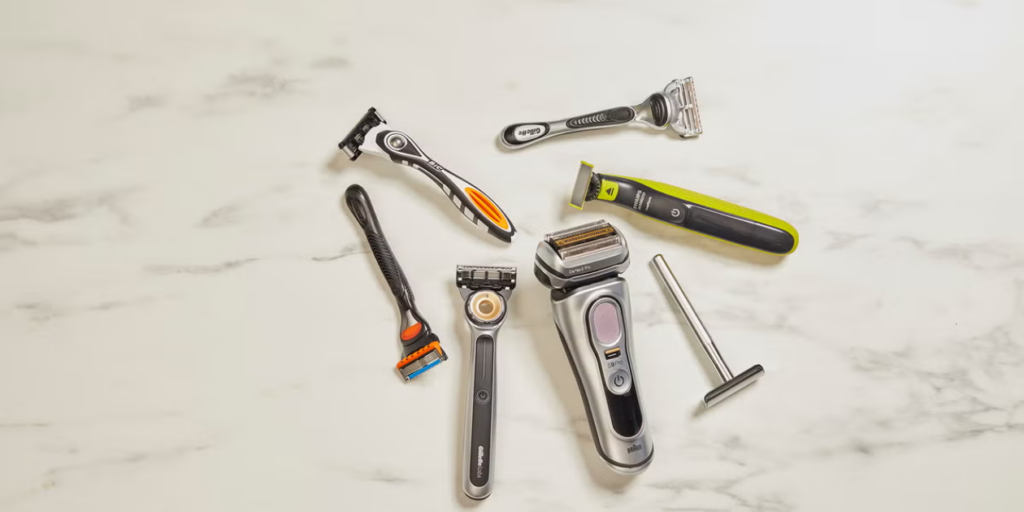Safety razors have become the tool of choice for those looking to achieve a closer, more comfortable shave without the drawbacks of disposable razors. With proper technique and preparation, you can minimize skin irritation, avoid razor burn, and enjoy a professional-quality shave at home. This guide will take you through the essentials of how to use a safety razor, step by step, for a perfect shaving experience.
Why Choose a Safety Razor?
Choosing a safety razor over a disposable one comes with several benefits, making it an appealing option for those who take shaving seriously. Here’s why safety razors are a great choice:
- Cost-effective: Unlike expensive multi-blade cartridge razors, safety razor blades are inexpensive and last longer.
- Eco-friendly: Safety razors are durable and produce less waste, as you only replace the blades rather than the entire razor.
- Healthier for the skin: A single blade cuts more efficiently and reduces the risk of irritation, ingrown hairs, and razor burn.
- Better shave quality: Safety razors offer more control, which leads to a cleaner, smoother shave.
Preparing Your Skin Before the Shave
To ensure a smooth and comfortable shave, preparing your skin is essential. Here’s how to get started:
- Cleanse your face: Use a gentle facial cleanser and warm water to remove dirt and oil. This step helps reduce irritation and allows for a smoother shave.
- Hydrate the skin: Shaving on dry skin can lead to cuts and irritation. Hydrate your face with warm water or a hot towel for a few minutes to soften the hair.
- Exfoliate: Gentle exfoliation removes dead skin cells, prevents clogged pores, and reduces the risk of ingrown hairs. You can use a mild scrub or a soft brush to do this.
Tools You Need for a Proper Safety Razor Shave
Before you begin shaving, make sure you have the right tools for the best experience:
- Safety razor: A high-quality safety razor is crucial for achieving a smooth shave.
- Sharp blade: Always use a fresh, sharp blade to prevent irritation and ensure a clean cut.
- Shaving cream or soap: Opt for a good-quality shaving cream or soap that provides ample lubrication.
- Aftershave balm: Choose a soothing aftershave balm or lotion to reduce inflammation and moisturize the skin post-shave.
How to Insert the Blade Into a Safety Razor
To properly use a safety razor, you’ll need to know how to insert the blade safely. Here’s a step-by-step guide:
- Disassemble the razor: Unscrew the handle from the head of the razor.
- Place the blade: Carefully place the new blade between the two metal plates on the razor’s head.
- Reassemble the razor: Reattach the razor head by screwing it back onto the handle securely, ensuring the blade is evenly aligned.
Proper Shaving Techniques With a Safety Razor
The technique you use with a safety razor is key to a smooth, injury-free shave. Follow these tips for best results:
- Shave at a 30-degree angle: Hold the razor at a slight angle (around 30 degrees) to allow the blade to glide smoothly across your skin.
- Use short, controlled strokes: Take short strokes to maintain control and avoid pulling or cutting your skin.
- Don’t apply pressure: Let the razor’s weight do the work. Pressing too hard increases the likelihood of cuts and irritation.
The Importance of Shaving Cream or Soap
Using high-quality shaving cream or soap provides the lubrication needed for a comfortable shave:
- Lubrication: Shaving cream or soap creates a barrier between the razor and your skin, reducing friction and preventing nicks.
- Hydration: Good shaving creams moisturize and soften your facial hair, making it easier to cut.
- Best choices: Look for creams or soaps that contain natural oils or soothing ingredients like aloe vera, which are ideal for sensitive skin.
Shaving Against vs. With the Grain
One of the most common questions in shaving is whether to shave against or with the grain:
- With the grain: Shaving in the direction your hair grows reduces the risk of irritation and razor burn, making it ideal for sensitive skin.
- Against the grain: While shaving against the grain may result in a closer shave, it increases the risk of nicks, cuts, and ingrown hairs. Beginners should avoid this technique until they’ve mastered shaving with the grain.
How to Avoid Cuts and Irritation When Using a Safety Razor
Safety razors are generally gentler on the skin, but proper technique is still important to avoid cuts:
- Use a sharp blade: A dull blade tugs at the skin, increasing the risk of cuts and irritation.
- Don’t rush: Take your time and focus on using slow, controlled strokes.
- Rinse the blade frequently: Clear the razor of hair and shaving cream after every few strokes to maintain optimal performance.
Aftercare: Post-Shave Routine to Prevent Razor Burn
Taking care of your skin after shaving is just as important as the shave itself:
- Rinse with cold water: After shaving, splash cold water on your face to close the pores and reduce inflammation.
- Apply aftershave: Use a soothing aftershave balm or lotion to calm your skin and prevent razor burn. Avoid alcohol-based products, as they can dry out your skin.
Cleaning and Storing Your Safety Razor
Proper maintenance of your safety razor ensures its longevity and optimal performance:
- Rinse after each use: Rinse the razor thoroughly with warm water to remove hair and soap residue.
- Dry the razor: Pat the razor dry with a clean towel to prevent rust.
- Store in a dry place: Always store your safety razor in a dry environment to avoid corrosion.
How Often Should You Change Safety Razor Blades?
Using a sharp blade is essential for a smooth shave, but how often should you change it?
- Frequency of shaving: If you shave daily, consider changing the blade every 5-7 shaves. For less frequent shavers, every 8-10 shaves may suffice.
- Signs of a dull blade: Tugging at your hair, more nicks, and skin irritation are all signs that it’s time to replace the blade.
Common Mistakes When Using a Safety Razor and How to Avoid Them
Here are some common mistakes beginners make when using a safety razor, along with tips to avoid them:
- Rushing through the shave: Take your time to avoid nicks and irritation.
- Using too much pressure: The razor’s weight is sufficient; pressing harder increases the risk of cuts.
- Incorrect blade angle: Ensure the blade is positioned at a 30-degree angle for a smoother shave.
Safety Razor vs. Cartridge Razor: Which is Better?
When comparing safety razors to cartridge razors, here are the key differences:
- Cost: Safety razors are more cost-effective in the long run due to cheaper blade replacements.
- Shave quality: A safety razor delivers a closer shave with less irritation.
- Environmental impact: Safety razors produce less plastic waste, making them a more eco-friendly choice.
Top Safety Razors for Beginners
If you’re new to safety razors, here are some top-rated options to consider:
- Merkur 34C: A popular choice for beginners, known for its balance and ease of use.
- Edwin Jagger DE89: Offers a smooth shave with a user-friendly design.
- Feather AS-D2: A high-quality razor for those willing to invest in a premium shaving experience.
Conclusion
Switching to a safety razor can transform your shaving routine by providing a closer, smoother shave with less irritation. With the right tools, proper technique, and attention to aftercare, you can master how to use a safety razor and achieve professional-quality results at home. Take your time to learn the process, and soon you’ll be enjoying the benefits of a clean, comfortable shave.
FAQs
1. How do I know if my safety razor blade is dull?
If you notice your blade pulling on your hair or if your skin becomes more irritated than usual, it’s time to change the blade.
2. Can women use safety razors?
Yes, safety razors are excellent for women, offering a smooth shave for legs, underarms, and other areas.
3. How often should I shave with a safety razor?
It depends on your personal preference and hair growth. Shaving every 1-3 days is common for most users.
4. Is it difficult to use a safety razor compared to a cartridge razor?
While there is a learning curve, most users find safety razors easy to use with practice. The key is using proper technique and taking your time.
5. What should I do if I cut myself while using a safety razor?
If you get a small cut, rinse the area with cold water and apply an alum block or a styptic pencil to stop the bleeding. Be sure to moisturize the area afterward.

